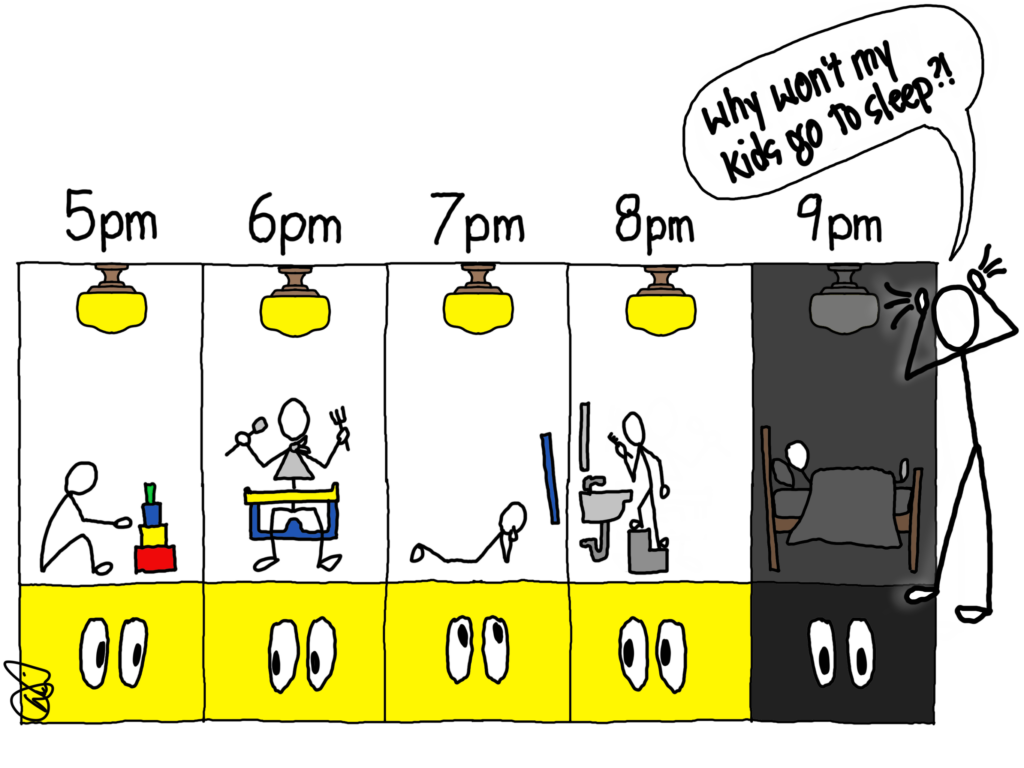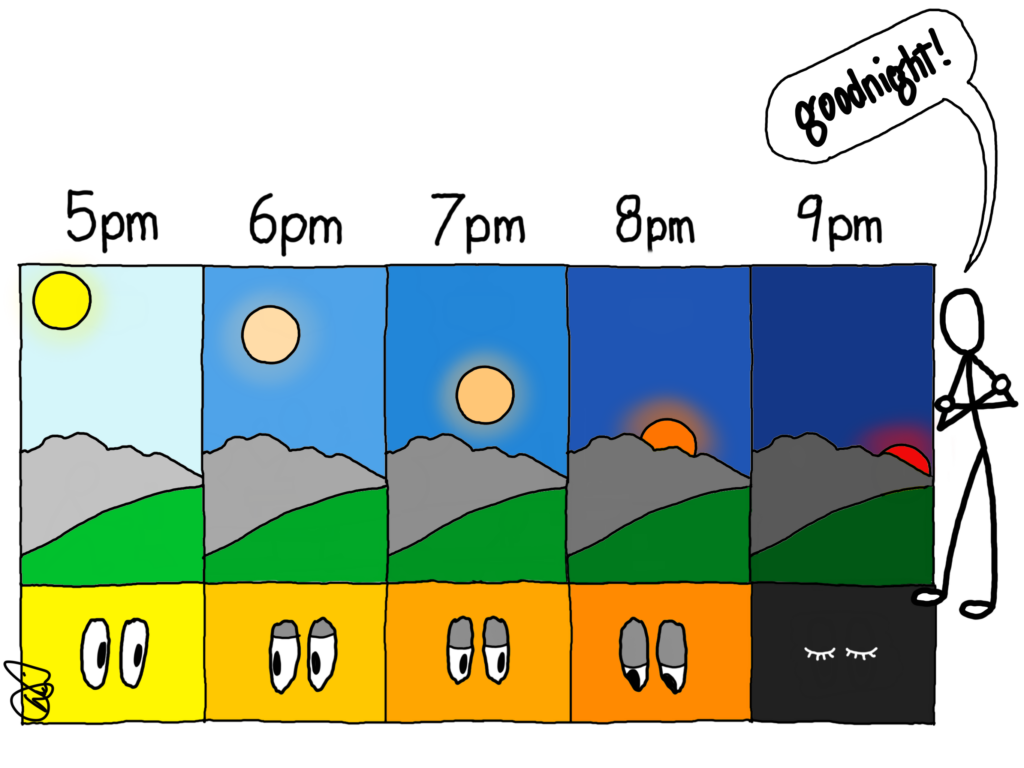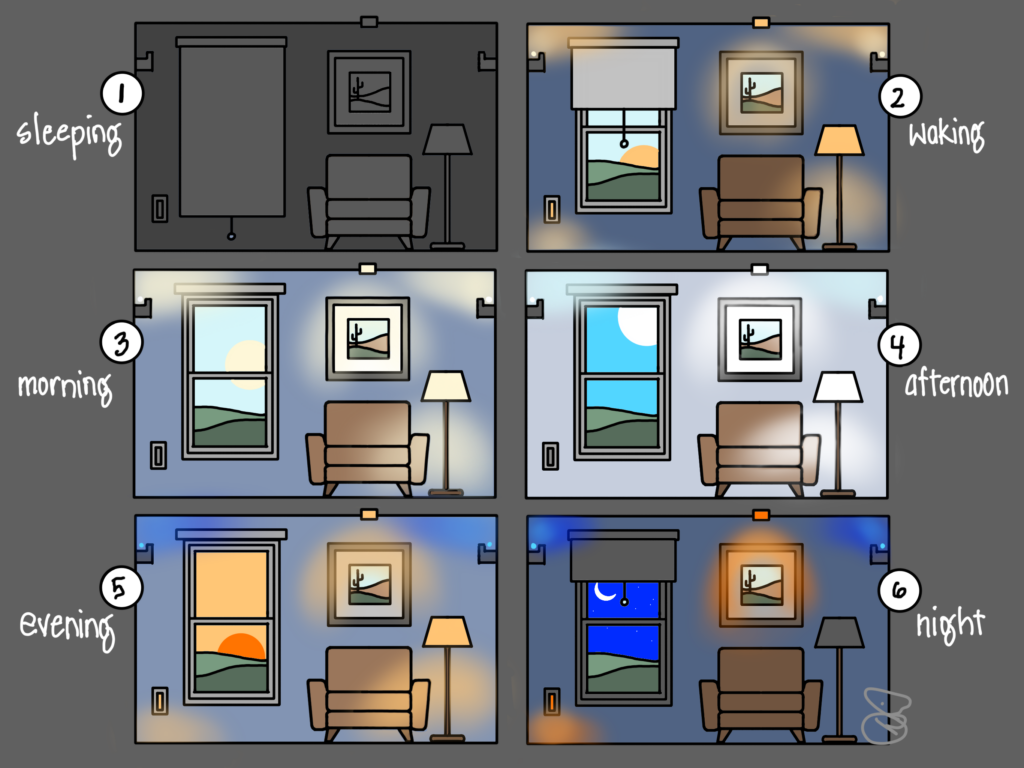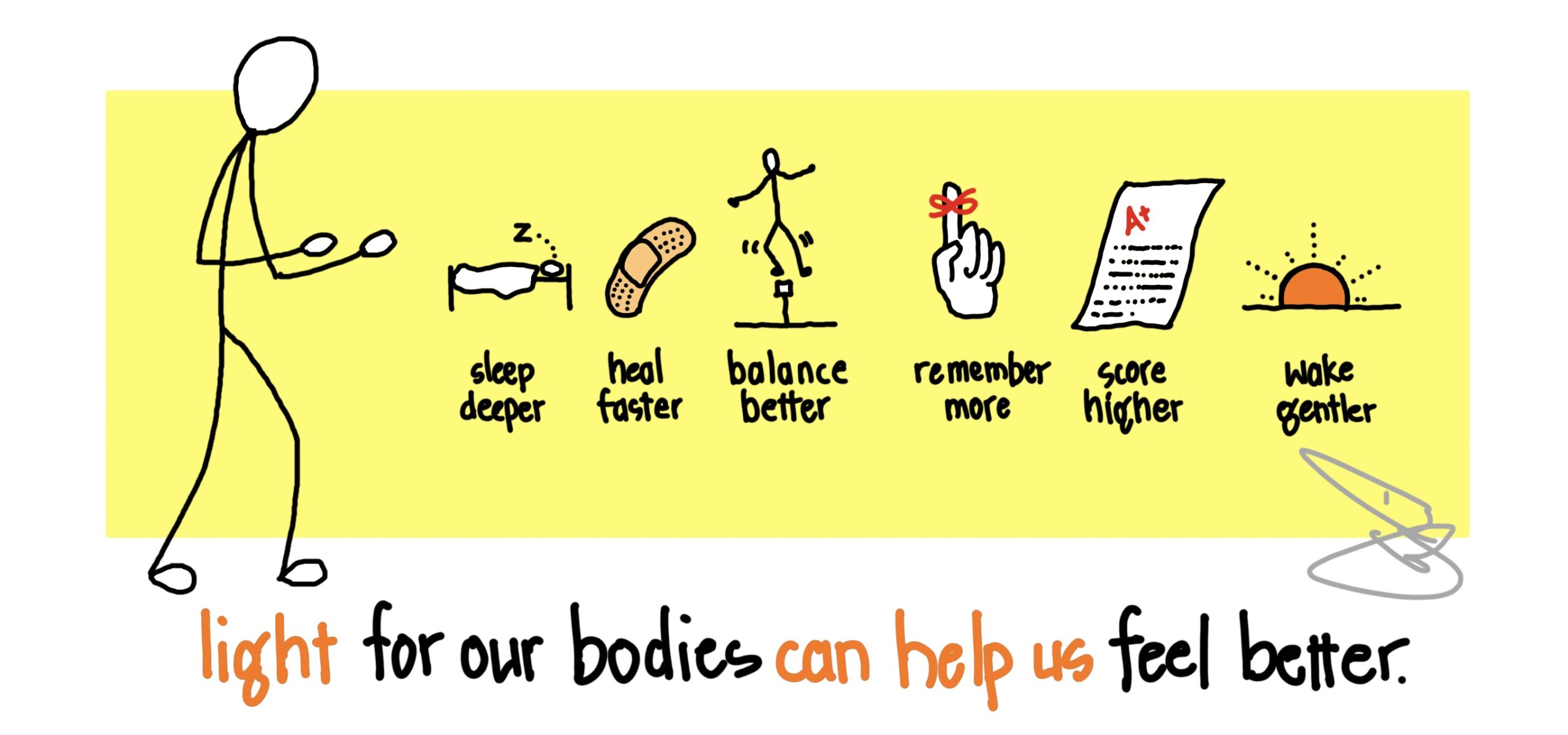“Using CCT as a proxy for the biological potency of light cannot be justified.”
-Esposito, T., Houser, K. Click HERE for full article.
A few weeks ago I revisited the promise that light can help us feel better and drew parallels between taste and sight. Food, when prepared creatively, can deliver momentary pleasure on our tastebuds but it takes careful planning to provide food that supports lasting physical and emotional wellness.
Our relationship to light is similar. When used artistically, light can deliver momentary pleasure. When used scientifically, light can support lasting wellness. The prescription for better light is both complicated and simple: if we get the right light at the right time, our bodies will do the right thing at the right time. How do get the right light at the right time? We can live outdoors, or we can make our indoor environments as close to natural as possible.

I know parents who spend an hour or more each night getting their children to sleep, and my heart goes out to them. My children are older now, and I barely remember the days of doing whatever it took to get our kids to quiet down (and stay down), but just thinking about bedtime routines brings about memories of exhaustion. Could light help us?
Imagine a young child’s evening in the typical home. Lights are on at 5pm when they are playing. The same lights are on at 6pm when they eat dinner. Lights are unchanged at 7pm when they watch a television program. Brushing teeth at 8pm occurs under the same bright, white light. At 9pm, they are plunged into darkness and told “go to sleep now.”
This is not how our bodies work, and the sudden darkness scares them. The abrupt switch leaves their brain scrambling to catch up. It may be hours before melatonin, a sleep hormone, floods their bodies and brings them at last to rest.
Then the adults, who spend the entire evening under the same unwavering bright white overhead light, turn off the lights and fall into bed exhausted…only to struggle to fall asleep.

Fixed white overhead light is not what our bodies need to feel better. Outdoors, the sun slowly shifts over the course of an entire evening from bright cool overhead light to warm soft light down low. The entire sky deepens and darkens. Our bodies receive hours of signals that prepare us for deep rest, and we fall asleep much more easily when we are influenced primarily by natural light.
Color temperature (warm or cool, blue or amber, measured in degrees Kelvin) is one variable of natural light, and fixed white light- typical of most LEDs- is the white bread of our daily lighting nutrition plan. Changing to “tunable” white light that shifts color might be analogous to upgrading your bread to multi-grain whole wheat and provide a noticeable improvement, and entire marketing campaigns and product launches are centered on the ability to shift from warm to cool and back again. One does not live on bread alone, however, and recommending color tuning as the only strategy for wellness is a bit like saying “if this cake tastes good, it will also be good for your health.”
Science, however, points to a more nuanced reality. In the article quoted at the start of this post, researchers concluded that color temperature cannot be a stand-in for circadian health, and I have seen numerous other well-respected peer-reviewed studies that reach the same conclusion. If you want healthy light, it isn’t enough to shift the color temperature of your lights. If we truly want to feel our best, sleep our best, think our best, heal fastest…we need light that changes color temperature and intensity and duration and direction.

Think for a moment about a sunny day and the soft, cool blue light transmitted by the sky. Without this soft light, the sun would cast our world like a film noir interrogation room: deep darkness side by side with harsh light. We need this soft, comfortable light to shower down on us outside and inside, and that cannot come from a recessed downlight or a chandelier. It must come from a combination of sources and usually requires reflecting light off the walls and ceiling just as light is refracted through the atmosphere in our sky.
My first foray into the creation of guiding principles landed on something I called the Sunny Day Theory, which was essentially just a decoding of what makes a sunny day great and how to get that into our buildings. Later I would add the Starry Night theory for deep night and amend it with Campfire Glow for dawn and dusk. But what does this mean for our homes?

This illustration is a gross oversimplification of light and wellness, but it does provide a simple roadmap for how light can help us feel our best, morning, noon, and night.
- Sleeping. We need total darkness for our deepest sleep, free of invasive streetlights, glowing alarm clocks, and passing car headlights.
- Waking. Like a gentle sunrise, light can wake us if it slowly brightens with the dawning of a new day. Switches cannot do this – only programmed dimmers can provide an automatic dawn.
- Morning. Light can brighten and begin cooling off to energize our mornings, and light shifts to more overhead and walls to mimic the brightening sky.
- Afternoon. Our coolest white light, brightest walls, and brightest ceilings are needed to bring us closer to midday sun and sky and fill our bodies with the energy we need after lunch.
- Evening. Overhead lighting begins to dim and lights down low take over to parallel sunset outdoors. Light bounced off the ceiling darkens dramatically, perhaps even shifting to the deep blue of a magic hour sky. Lighting warms with the setting sun to a the rich amber of candlelight, and all the changes signal our body to begin relaxing and winding down.
- Night. As we wrap up our days, our homes should be dimly lit, with virtually all lights pointing away from our eyes to minimize glare. A very dim blue ceiling catches the last rays of daylight while dim amber lighting below our eyes paves the way for melatonin to flood our brains for deep rest.
All this can be done with technologies and techniques available today, but most of us will go through the day with white bread white lighting…or what might be called Walmart White. It works for shopping and mopping, but not for our bodies.
The right light for our bodies can help us feel better, all day long, and help us sleep better at night. That is something we all need.
Read more of the Light Can Help Us series HERE.
Read more on Light & Health HERE.
Thanks to Alessio Urso for bringing the article to my attention, and for always teaching us about light and health!
